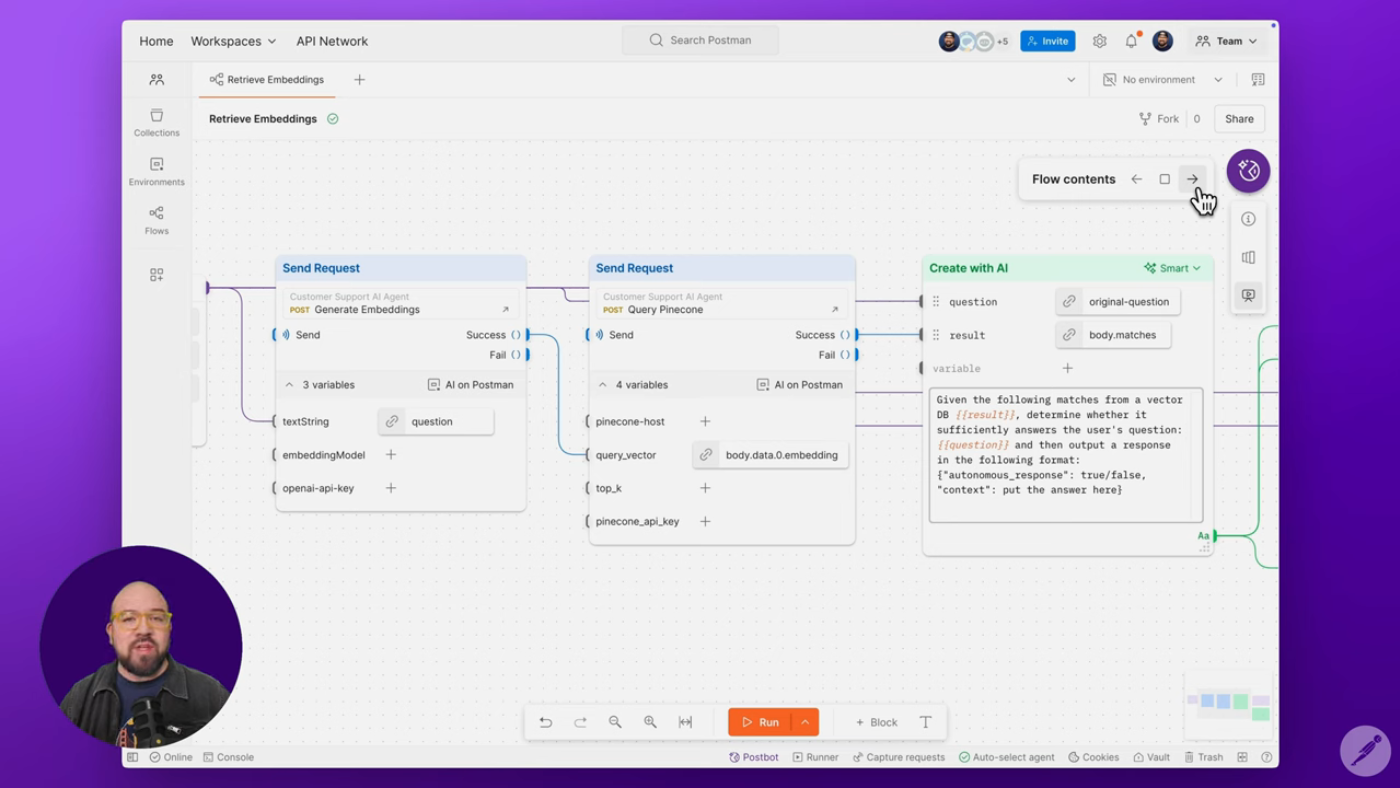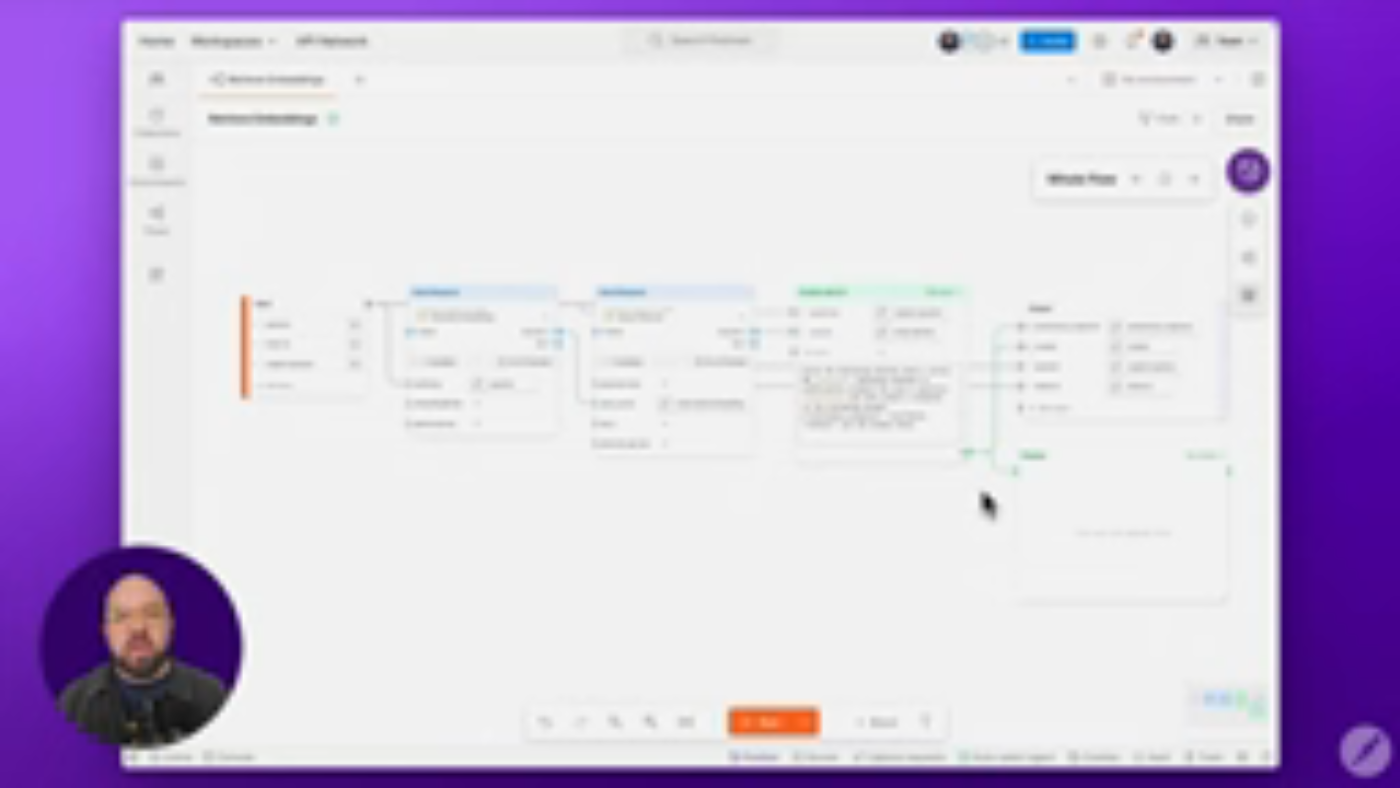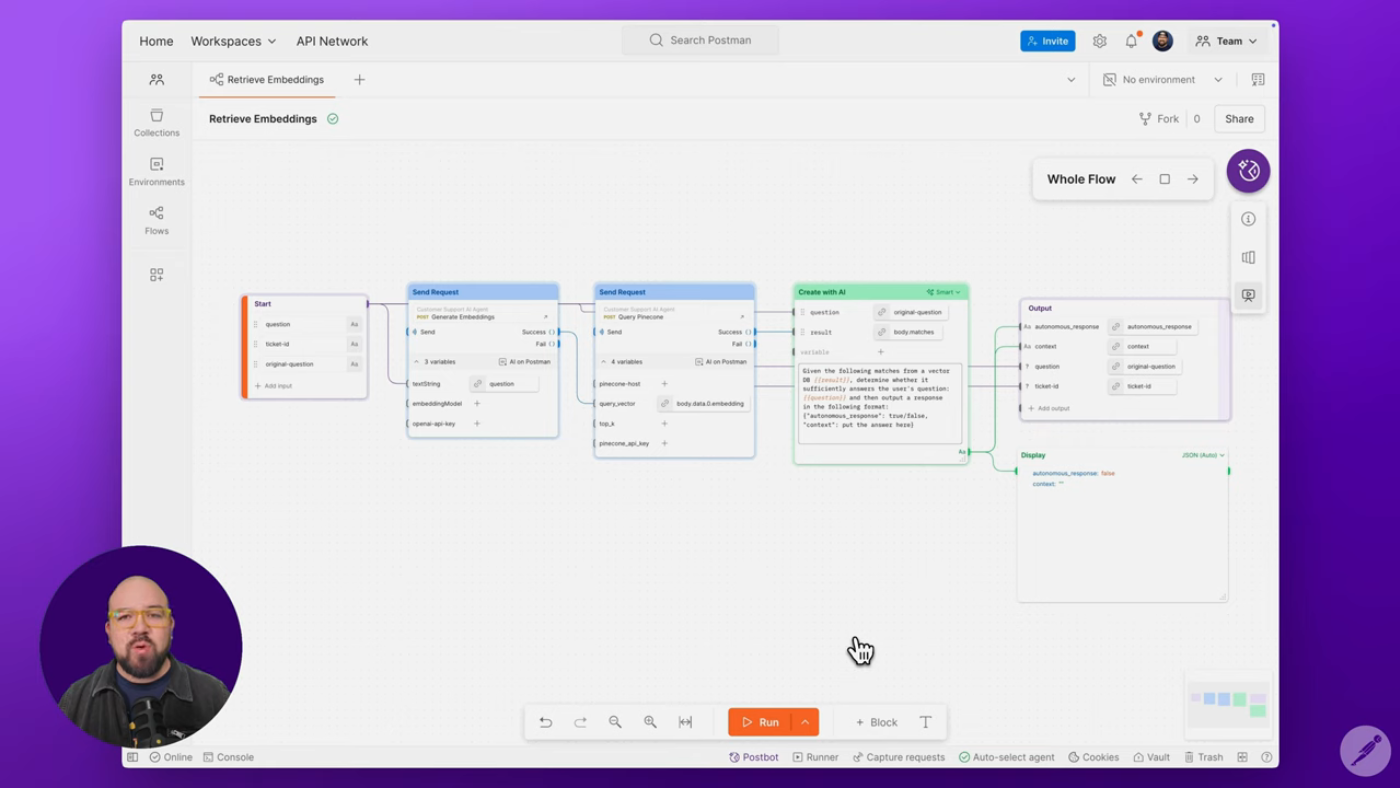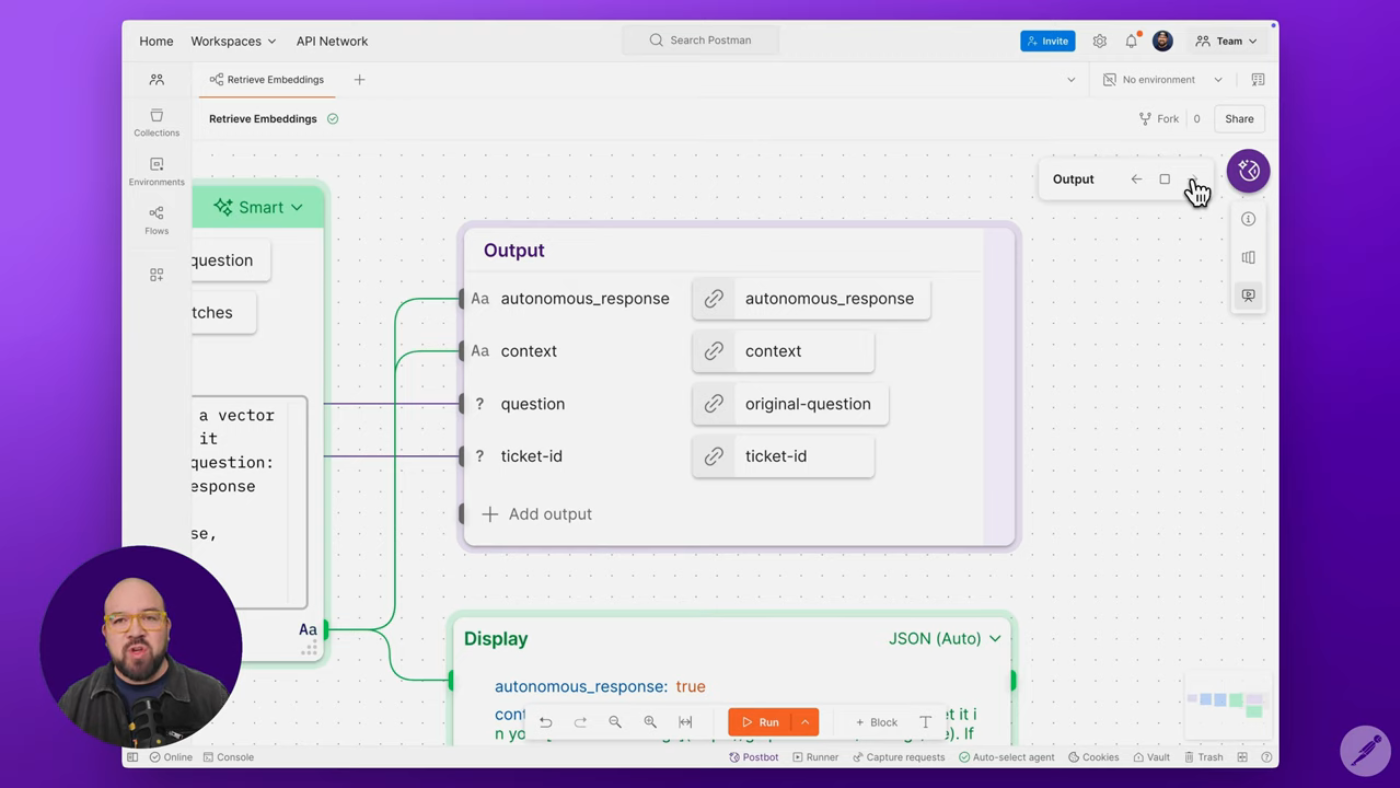Building a Modular AI Agent with Postman Flows
Postman Flows is a powerful tool for orchestrating APIs, LLMs, and vector databases to build intelligent systems. In this article, we will explore how to combine vector embeddings, semantic search, and LLM decision-making in Postman Flows to create a modular AI agent.
Introduction to Postman Flows
Postman Flows is a visual interface for building and orchestrating APIs. It allows developers to create modular, reusable workflows that can be easily integrated into larger systems. With Postman Flows, you can build a three-stage AI agent architecture that combines vector embeddings, semantic search, and LLM decision-making.
 This is the caption for the image 1
This is the caption for the image 1
Stage 1: Embedding Generation
The first stage of the AI agent architecture is embedding generation. This stage takes text input and converts it into a vector representation using the OpenAI Embeddings API. The embedding generation block is a crucial component of the AI agent, as it allows the agent to capture semantic meaning from text input.
 This is the caption for the image 2
This is the caption for the image 2
Stage 2: Vector Similarity Search
The second stage of the AI agent architecture is vector similarity search. This stage uses the Pinecone vector search engine to find the most relevant matches from the knowledge base. The vector similarity search block is a powerful tool for finding semantic matches, as it can capture nuances in language that traditional keyword matching cannot.
 This is the caption for the image 3
This is the caption for the image 3
Stage 3: Decision-Making with LLM
The third stage of the AI agent architecture is decision-making with LLM. This stage uses a large language model (LLM) to evaluate the search results and make a decision based on the input. The LLM block is a crucial component of the AI agent, as it allows the agent to make informed decisions based on the semantic meaning of the input.
 This is the caption for the image 4
This is the caption for the image 4
Testing the AI Agent
To test the AI agent, we can use a customer question about paying an unpaid invoice. We can set up a test scenario with a normalized question and an example email from the customer. The AI agent can then process the input and provide a response based on the search results and LLM decision-making.
 This is the caption for the image 5
This is the caption for the image 5
Conclusion
In this article, we have explored how to build a modular AI agent with Postman Flows. We have seen how to combine vector embeddings, semantic search, and LLM decision-making to create a powerful AI agent architecture. With Postman Flows, you can build intelligent systems that can capture semantic meaning from text input and make informed decisions based on that input.
 This is the caption for the image 6
This is the caption for the image 6
Future Development
The future of AI development with Postman Flows is exciting. With the ability to create modular, reusable workflows, developers can build intelligent systems that can be easily integrated into larger systems. As AI technology continues to evolve, we can expect to see more powerful and sophisticated AI agents that can capture semantic meaning from text input and make informed decisions based on that input.
 This is the caption for the image 7
This is the caption for the image 7
In the next video, we will explore how to integrate the AI agent into a complete event-driven agentic workflow. We will see how to use the AI agent to make informed decisions based on semantic meaning from text input, and how to integrate the AI agent into a larger system. Stay tuned for more API and AI content, and thanks for watching!
